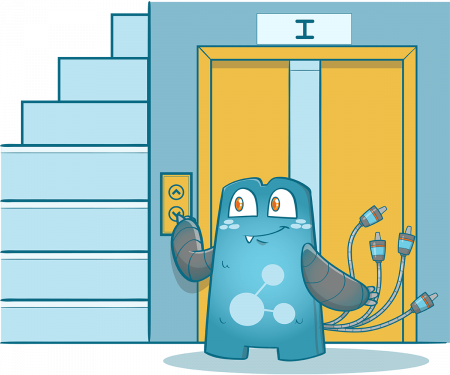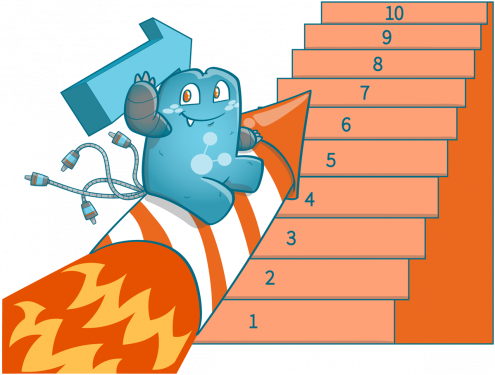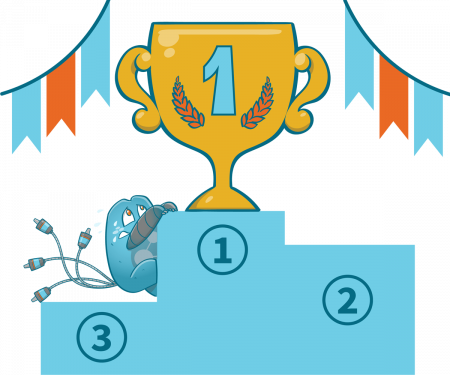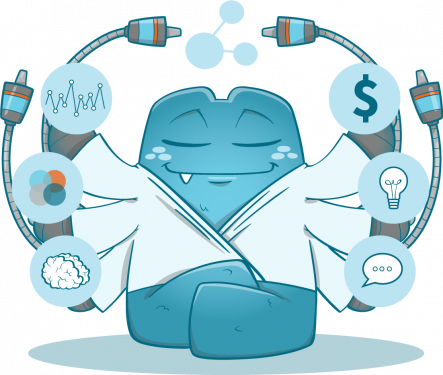Data-Driven Internal Linking: Your Site Structure on Steroids

Do you want your website to rank higher in search engines? Of course, you do! One of the best ways to achieve this is through a data-driven internal linking strategy. In this blog post, we will discuss what this is and how you can use it to improve your site’s ranking. We will also provide some tips on how to get started.
Data-Driven Approaches: A Quicker Way to Succeed in Anything
A data-driven approach to any problem has been used by successful people for many years now. The basic idea is to let the data guide your decisions instead of relying on intuition or gut feeling. This approach can be used in many different areas, including website development and SEO.
As more people discover the power of internal linking for websites, you need to start stepping up your game to ace the competition. One way is to shift towards data-driven internal linking.
When it comes to internal linking, a data-driven approach means that you analyze your website’s data to determine which links to add, remove, or change. This can be done using a number of different tools and methods.
Let’s look at some of the most common data-driven approaches you can use on your website.
Analyzing Your Website Traffic
Your website traffic is vital information you can use to improve your strategies. Website traffic says a lot about how well your website is performing and what changes need to be made.
It also shows you which pages receive the most traffic and which ones need more work. This is valuable information you can use to tweak your internal linking strategy.
To get started, you need to track your website traffic data. There are many different ways to analyze your website traffic. You can use Google Analytics, for example. This free tool provides a wealth of data you can use to improve your internal linking strategy. There are also paid tools available if you want more features and deeper insights. Once you have this data, you can start analyzing it to see what changes need to be made to your site’s internal linking.
Looking at User Behavior
Another approach is to look at how users interact with your website. This information can be obtained through user testing or heat mapping tools. These tools will show you which pages are being visited the most and where users are clicking.
Knowing the hotspots on your website will allow you to place internal links that can lead users to the information they are looking for. This will improve their experience on your site, which can lead to more conversions and higher rankings.
The parts of your website where users stay can also help you to determine which links should be added, removed, or changed. This approach can be very effective in improving your website’s ranking.
Conducting a Link Audit
A link audit is another data-driven approach you can use to improve your internal linking strategy. A link audit involves analyzing all the links on your website to determine which ones are working and which ones are not.
This information can then be used to make changes to your site’s internal linking. This approach can be time-consuming, but it is worth it if you want to rank higher in search engines.
Analyzing Your Competitors’ Linking Strategy
Your competitors’ linking strategy can be a valuable source of information. By analyzing their linking strategy, you can learn from their successes and failures. You can also get ideas on how to improve your own internal linking strategy.
If you see that a particular website is successful in your niche, you might want to look at how they use internal links. You can use this as a pattern for your website so you can replicate their success.
On the other hand, if you see that a website is not doing well, you can learn from their mistakes and avoid making the same ones on your site.
There are many different ways to get ideas from your competitors. You can use tools like Majestic or Ahrefs to analyze their linking strategy. You can also look at their website’s source code to see how they structure their links.

Making a More Effective Internal Linking Strategy
Internal linking isn’t just about placing links all over your website, you would need to consider the placement of links, number of links, and other factors. Here we discuss these factors so that your internal linking strategy will be a huge success.
Do Proper Keyword Research
Keyword research might just be one of the most important partners for internal links. Without the proper keywords, all your effort might just go to waste.
Your keywords are important since these are what help search engines determine the topic of your page.
When choosing keywords, you need to consider several factors such as relevance, search volume, and competition. You can use keyword research tools like Google Keyword Planner or Moz Keyword Explorer to help you with this task.
Choose the Right Anchor Text
The anchor text is the words that are used in the link. These words provide context about what the linked page is about. For example, if you’re linking to a page about SEO tips, then your anchor text might be “SEO tips.”
It’s important to choose the right anchor text because it helps search engines understand what your linked pages are about. It also helps users know what they will find on the linked pages.
If you’re not sure what anchor text to use, you can try using the keywords you’ve researched. You can also ask yourself what users would expect to see when they click on the link.
Avoid Using Too Many Links
Using too many links on a single page can be a bad thing. It can make your pages look like spam and it can also irritate users. If you want to avoid this, you should limit the number of links on each page to a maximum of three.
This doesn’t mean that you should only have three links on your entire website. You can still have more than three, but they should be spread out over multiple pages.
Consider The Placement Of Links
The placement of links is just as important as the number of links. You should avoid placing links in the middle of paragraphs or in other places where they might interrupt the user’s experience.
Instead, you should place them at the beginning or end of paragraphs, in lists, or in other places where they will be easy to spot.
Use Nofollow Links Sparingly
Nofollow links are links that tell search engines not to follow them. These links can be useful if you’re linking to a page that you don’t want to boost search engine rankings. However, you should use these sparingly because too many nofollow links can hurt your website’s ranking.
A good rule of thumb is to use nofollow links for pages that you don’t control, such as user-generated content or affiliate links.
Internal Links and SEO
Your internal links directly affect your SEO since they help search engines understand your website’s structure. They also help users navigate your website, which can improve the user experience.

Here are the benefits of internal links on SEO:
Improves Search Engine Crawlability
Internal links allow search engines to easily crawl and index your website. This is because they help search engines understand the hierarchy of your pages. Internal links also help search engines find new pages on your website.
Increases The Time Users Spend On Your Website
Internal linking can keep users on your website for longer periods of time. This is because it provides them with a way to easily find related content that they might be interested in.
For example, if your pages are about a breed of dog, it would be wise to place links about dog shampoos that are good for that particular breed or where to buy that type of dog food.
Helps You Rank For More Keywords
Internal links give you the opportunity to rank for more keywords. This is because they allow you to link to other pages on your website that are relevant to the keyword.
For example, if you have a page about “dog breeds”, you can link to pages about individual dog breeds. This will help you rank for those keywords as well.
Generates More Page Views
Internal linking generates more page views because it allows users to easily find other related content on your website. This is especially true if you have a large website with a lot of content.
Helps You Rank For Long-Tail Keywords
Internal linking can help you rank for long-tail keywords. This is because it allows you to link to pages that are relevant to the keyword.
Start Using a Data-Driven Approach Today
If you want to improve your website’s ranking, you need to start using a data-driven internal linking approach. This means that you should link to pages based on the keywords you’ve researched. You can also ask yourself what users would expect to see when they click on the link.
Avoid using too many links and consider the placement of links when adding them to your pages. You should also use nofollow links sparingly. Remember, internal linking directly affects your SEO and can also help increase the time users spend on your website.
If you’re looking for the perfect tool to aid you in your internal linking endeavors, check out the Internal Link Juicer now!






